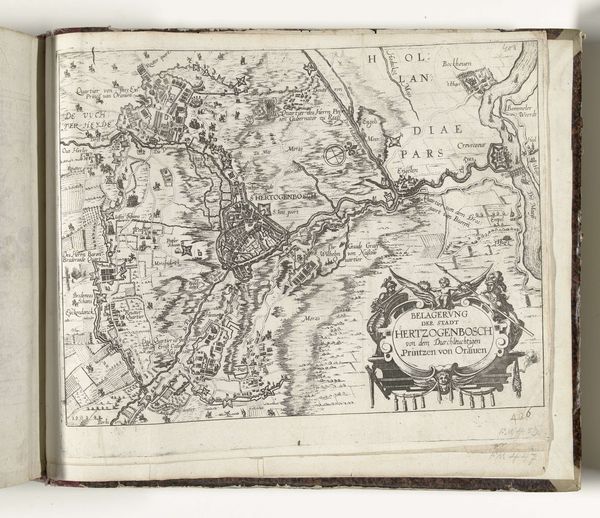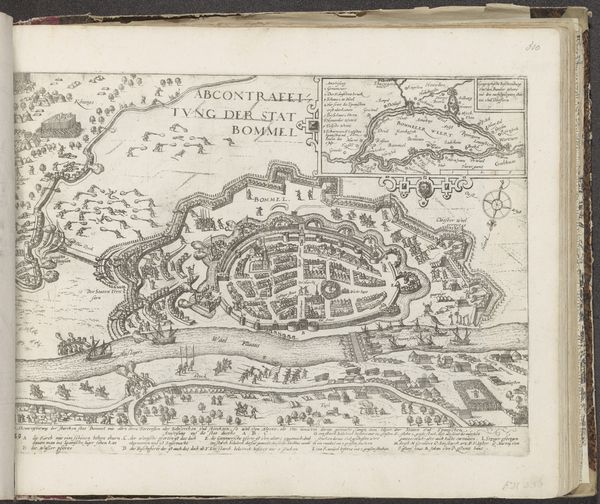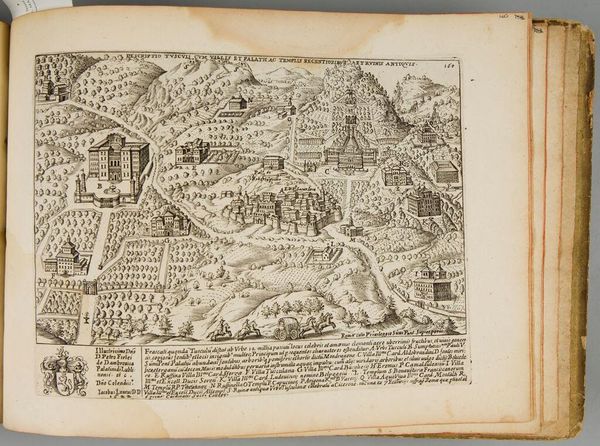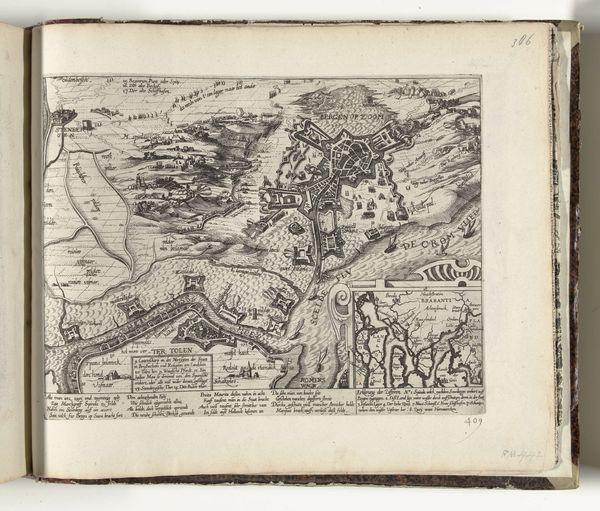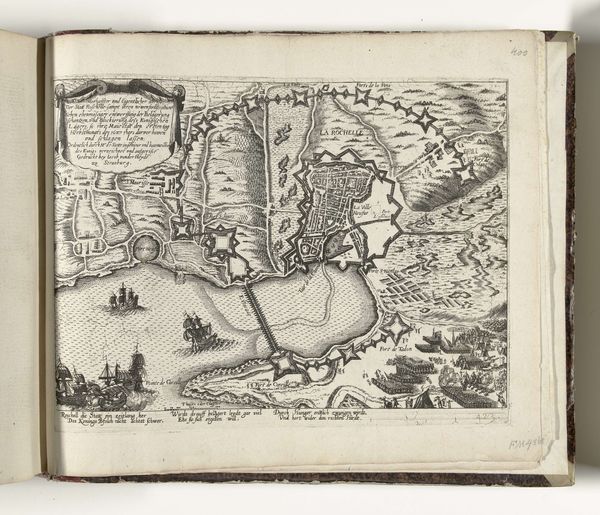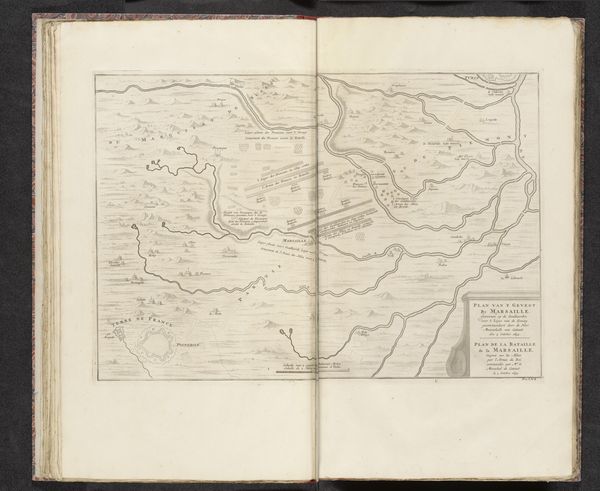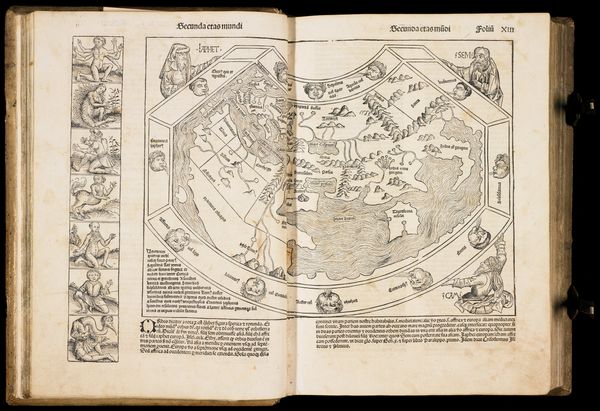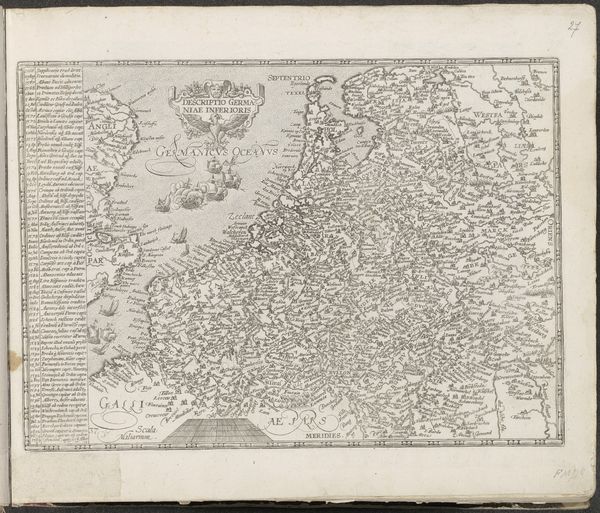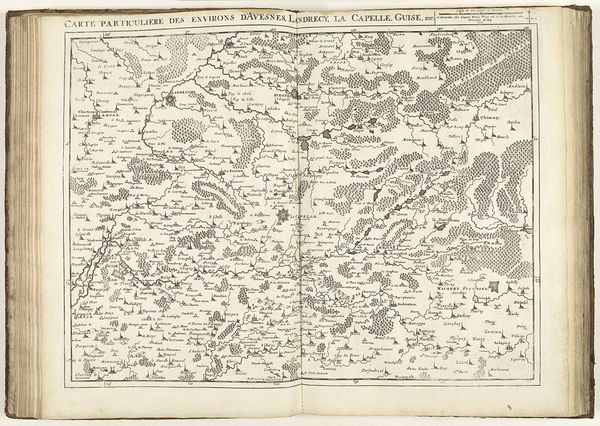
La cosmographie universelle de tout le monde, volume 1 1575
0:00
0:00
drawing, print, woodcut
#
drawing
# print
#
book
#
landscape
#
11_renaissance
#
woodcut
#
cityscape
Dimensions: 13 3/8 x 9 7/16 x 3 3/4 in. (34 x 24 x 9.5 cm)
Copyright: Public Domain
Curator: This work is "La cosmographie universelle de tout le monde, volume 1," created by Sebastian Münster in 1575. It’s a fascinating combination of drawing and printmaking, specifically a woodcut illustrating a cityscape. Editor: It looks incredibly detailed! The sheer density of buildings and geographic markers really emphasizes a sense of place, almost overwhelming. What's the historical context here? Curator: Münster was a major figure in Renaissance cartography and cosmography. His "Cosmographia" was an incredibly popular book, effectively an encyclopedia presenting descriptions and maps of the entire known world at the time. This page, showcasing the city of Colmar, represents not just geographical accuracy, but civic pride. Editor: So it's more than a map, it’s a symbolic representation of the city, of power and societal organization rendered in visual terms. It reminds me of medieval tapestries in its density and emblematic purpose. I wonder, how much did accuracy matter, compared to communicating that sense of importance? Curator: Accuracy certainly played a role, but you're right, symbolism and communicating the idea of the city were equally important. Notice how the cathedral dominates the center. It’s both a real place and an emblem of Colmar's spiritual and civic heart. The numbered key along the bottom, identifying different structures, points towards this didactic aim as well. Editor: The choice of woodcut is also intriguing. It's so precise, almost architectural in its linework, creating a powerful sense of order. But also, it feels deeply human because the imperfections are evidence of its craft. What are your thoughts on that? Curator: Indeed, the woodcut medium speaks to both precision and a very specific historical aesthetic. It's interesting how the landscape is not just background, but intertwined with the urban fabric, blurring the boundaries between the natural and the human-built world. That relationship carries psychological weight even today. Editor: Absolutely, it underscores a relationship of integration and respect for the land. Looking closely has opened up so much here – it’s a real glimpse into how they saw their place in the world. Curator: I agree. These prints reveal not only geographical information, but values, anxieties, and aspirations of the Renaissance world.
Comments
No comments
Be the first to comment and join the conversation on the ultimate creative platform.
